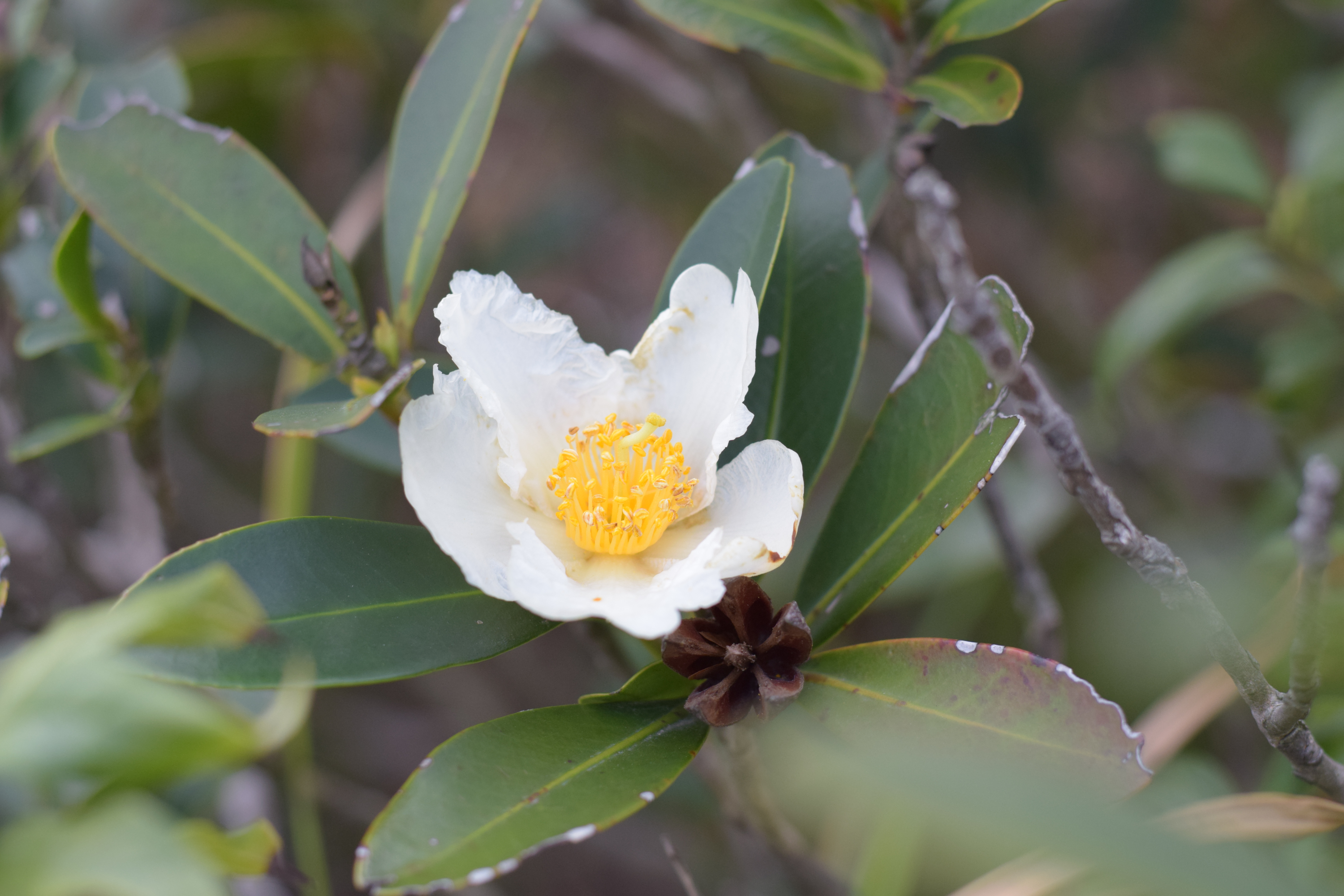Loblolly-bay
(Gordonia lasianthus)

Description
Gordonia lasianthus (loblolly-bay, holly-bay, gordonia, or bay) is a small to medium-sized evergreen tree or shrub found in acidic, swampy soils of pinelands and bays on the Atlantic and Gulf Coastal Plains of the southeastern United States. It is a member of the tea or family Theaceae. It is slow growing with soft, light-colored (varies in color from cream to carmine), fine-grained wood of little commercial value, although loblolly-bay could be managed as a source of pulpwood. When older specimens are cut, the wood exudes a strong scent. It is similar to a mixture of fresh oranges and pine sap. The bark of the adult tree varies from medium grey to a red brown coloration. Dead adult specimens of loblolly bay exhibit a lustrous shine when exposed to sunlight for several years. The white showy flowers and shiny foliage make it a desirable ornamental, but it is not easy to cultivate. Deer browse stump sprouts heavily. Loblolly-bay is continuously distributed along the Atlantic and Gulf Coastal Plains from Coastal Southern Virginia to the Appalachicola River in the Florida Panhandle. Discontinuous populations exist in Florida, the coastal counties of Alabama, the coastal counties of Mississippi, south and southeast Texas, and southern Louisiana. In South Carolina it is commonly found in the lower Coastal Plain, but in the middle and upper Coastal Plain it is restricted to specific sites. Loblolly-bay has long been used by horticulturists in landscaping. Most research on loblolly-bay has been done by horticulturists interested in propagating it. In the Southeast, loblolly-bay is considered a handsome and hardy tree valued for its glossy dark-green leaves and abundant white flowers. Its wood has been used in cabinetmaking and its bark as a tanning agent. If the bark is steeped in warm water, it will dye both the container and water a rich carmine color. Because of its ability to grow in wet bogs and flats where loblolly pine does poorly, loblolly-bay silviculture may offer a management alternative for such areas. Laboratory papermaking tests conducted recently and other results reported in the literature (3,4) indicate that the pulp yield from loblolly-bay was acceptable (52 percent), the bulk of the paper was low (1.46 cm/g or 2.53 in/oz), and the strength acceptable.
Taxonomic tree:







